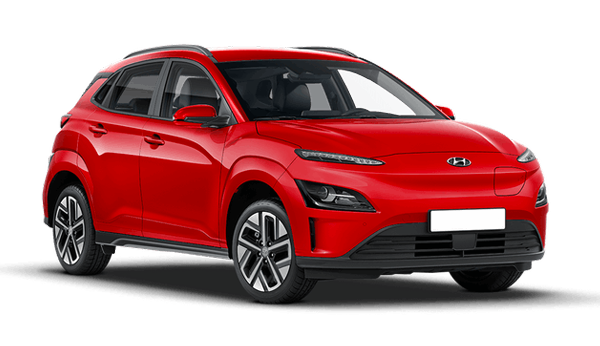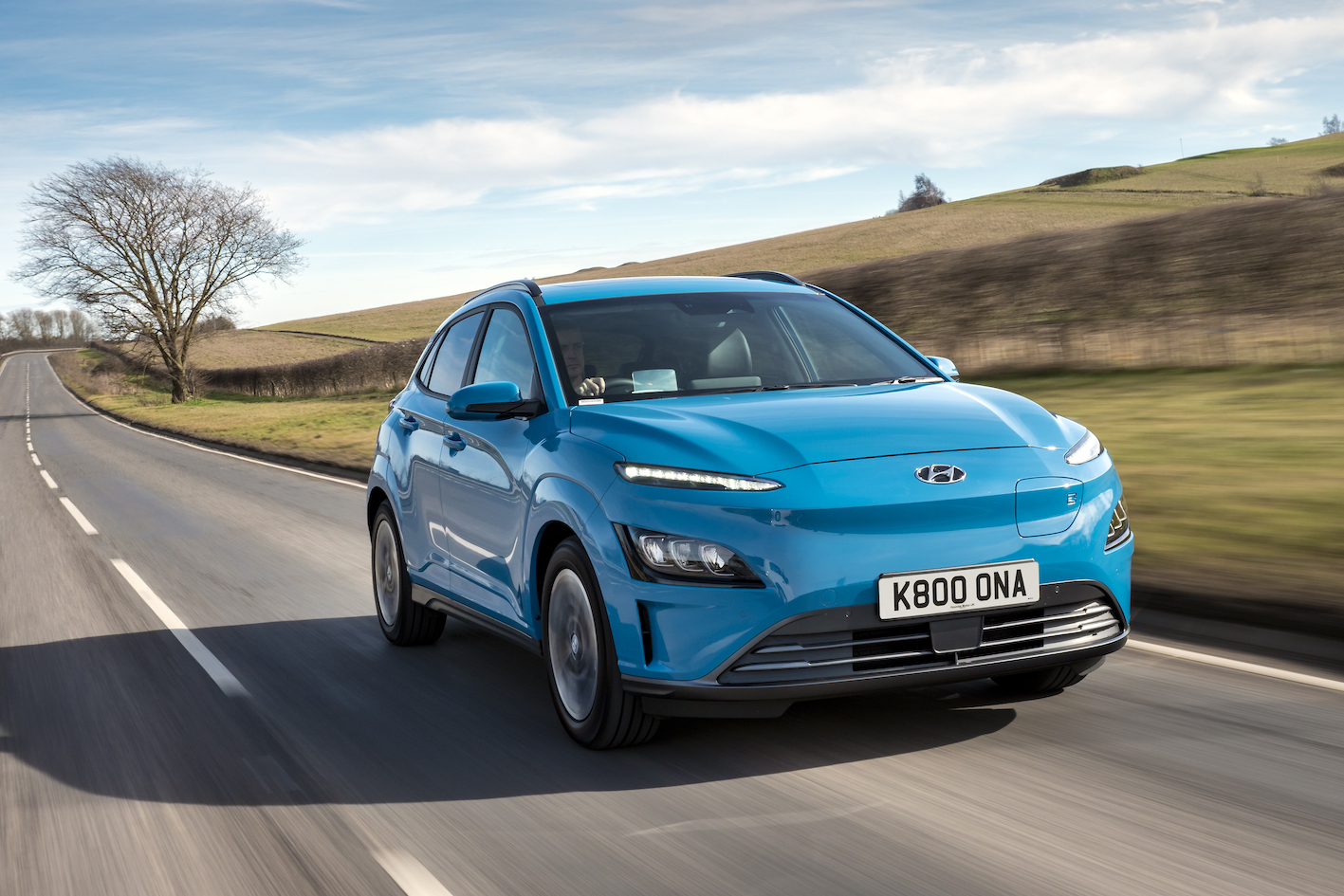Though not Hyundai’s first electric vehicle – that award goes to the Ioniq Electric – the Kona Electric proved to be a real turning point for this South Korean car maker. Launching in 2018, it was one of the first more affordable electric cars to offer a genuinely impressive electric range.
With the larger 64kWh battery pack – fitted to most versions you’ll see for sale – Hyundai claims 279 miles of range on a full charge, though small tweaks have increased that to 300 miles more recently.
With Hyundai now being considered a leader when it comes to electric vehicles and hybrids, the Kona Electric has played a key part in that, and has proven popular with buyers and a great ‘first EV’ thanks to the reduced range anxiety that comes with a bigger battery. There are now plenty for sale on the used market, with prices now starting from around £21,500. Here’s what you need to know about buying a Hyundai Kona Electric.
Prices
Though launching in 2018, the Kona Electric’s success was somewhat limited by factors outside of Hyundai UK’s control – supply. To begin with, all Kona Electric were produced in Ulsan, South Korea, with only a small number of cars coming to Britain. However, from 2020 it would also be produced in the Czech Republic – significantly increasing supply and reducing the huge waiting times many prospective buyers previously faced.
You’re probably wondering what this means for you? Well, essentially it equates to very few 2018 or 2019 models being on the used market, but if you can find one they’ll be noticeably more affordable. Expect to pay from around £13,800 for a high mileage example and closer to £20,000 for a lower mileage version.
Just a couple of years after arriving on sale, Hyundai tweaked its Kona Electric, bringing with it a bolder design and additional safety and convenience technologies. It gets a bolder design at the front thanks to an absence of a front grille – its predecessor features a dimpled front end instead.
There are also sharp new LED headlights, while around the rear there’s a new bumper that helps to make this Kona slightly longer than its predecessor. A new 10.25-inch digital dial display is also fitted across the full range, along with additional connected services that lets you operate various aspects of the car using a smartphone app – such as programming charging times and the popular ‘remote climate control’ that lets you warm or cool the car before you even get to it.
While even entry-level SE models (only offered on the 39kWh model) get features like a seven-inch touchscreen, adaptive cruise control and a reversing camera, you’ll likely want a Premium model that gains features like front and rear parking sensors, heated front seats and an upgraded sound system.
Spotting a Hyundai Kona Electric
Hyundai launched its conventional Kona in 2017 with petrol engines, and even that car is quite bold in its own right. The Electric model is noticeably bolder, though, with features like a two-tone roof and a striking blanked-off front grille – a typical cue of an EV due to the reduced need for cooling – setting it apart from the regular car. Look closely and you’ll spot the charging flap nestled in the front bumper, too.
Inside, the main changes are the EV-specific dials – which are fully digital on the latest cars – along with the absence of a transmission tunnel. In its absence, there’s a generous storage space under the centre console. There’s also no ‘gear lever’ as such, rather just buttons for Drive, Park, Neutral and Reverse. They can seem fiddly at first, but are easily adjusted to.
Though electrification brings many benefits, it is slightly at the expense of interior space, with the large battery pack taking a noticeable slice out of the Kona Electric’s boot, which is quite small compared to rivals like the Peugeot e-2008.
Top tech
There are two clear powertrain options on the Kona Electric – one putting an emphasis on affordability and the second on performance and range.
Let’s start with the standard powertrain option, which combines a 134bhp electric motor with a 39kWh battery. It’s exactly the same setup as what you get in Hyundai’s Ioniq Electric, too. Despite being the ‘entry-level’ option, thanks to the immediacy of the electric motor, it actually feels quicker than its 0-60mph time of 9.7 seconds suggests, while flat out it’s capable of reaching 96mph.
For maximum pace, though, you want the top-spec version. That’s because you get a 201bhp electric motor – bringing more power than you get in a Ford Fiesta ST hot hatch, for comparison – that means you can sprint from 0-60mph in just 7.7 seconds. This model’s top speed also increases to 104mph.
Efficiency
As with all cars – and especially electric cars – efficiency varies massively depending on how you drive the Kona Electric. However, this Hyundai is definitely one of the cars that offers one of the more accurate mile read-outs.
Even the 39kWh battery can deliver a credible electric range of 189 miles (an impressive 4.8 miles per kWh), though many buyers unsurprisingly flock to the Kona fitted with the larger 64kWh battery. With its 300-mile electric range, it’s the most of any EV that now qualifies for the government’s plug-in car grant. It really should help to eliminate range anxiety and enable long-distance travel with minimal difficulty.
What goes wrong?
Though Hyundais of recent years have proven to be a safe choice when it comes to reliability, the Kona Electric has been hit by a recall requiring the electric batteries to be replaced. It affects models built between 2018 and 2020, and is quite an important fix due to defects in the battery cells – provided by technology giant LG – that could cause a fire risk in very rare circumstances. When buying a used car, you should check that the fix has been carried out.
It’s worth noting this job will be carried out without charge by Hyundai, while the Kona Electric still benefits from the South Korean firm’s acclaimed five-year, unlimited mileage warranty. The battery is also separately covered for eight years and 100,000 miles.
Charging
With two battery sizes of quite significantly different capacities, it can lead to some noticeable time difference in how long it takes to plug in.
For example, plugged in at home with a 7.2kW wallbox, it will take just six hours for the 39kWh, but nine hours in the case of the larger 64kWh battery.
However, because the bigger battery model can charge at a quicker rate when it comes to rapid charging, it means the times are actually the same if plugged in using a 100kW charger, both taking 47 minutes for the battery to get from 10 to 80 per cent. However, currently it’s 50kW chargers that are more common here in the UK. Using one of these, it will take 47 minutes to charge the 39kWh battery version and 64 minutes for the 64kWh battery.
Both an emergency three-pin plug and a Type 2 cable were both included on new Kona Electric models in separate bags, so it’s worth checking to see that both of these are included on a used example. It’s worth noting when parking to charge, you’ll want to park in spaces forward as the charging flap is located in the front bumper. Reverse parking really will be a thing of the past!
Summary
The importance of the Kona Electric really shouldn’t be underestimated. Versions equipped with the 64kWh battery really helped to showcase that you could buy a lower-price EV with a long range, without having to choose a more premium car like a Tesla. It’s a testament that even several years after it first arrived on sale, many rivals still aren’t capable of such long ranges.
With funky styling and a generous amount of standard equipment, it’s a very enticing option and a great choice for those looking to make the switch to electric.













.jpg)








